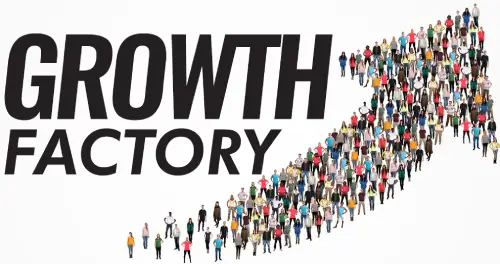How to Generate Backlinks – Complete SEO Guide for 2025
Backlinks are a crucial part of any SEO strategy. Understanding backlinks will help you achieve high rankings in Google, whether you are new to content marketing or have done it for some time. Backlinks improve the visibility of your website and also attract traffic.
This guide will explain the importance of backlinks and how they can be built effectively.
Table of Contents
ToggleWhat Are Backlinks?
Backlinks are created when a website links to an external resource. These links may point to a variety of web resources such as web pages and directories. They are similar to citations in that they indicate credibility and relevance.
Backlinks are usually links that direct users to your site from other sites. These inbound hyperlinks are essential for improving your brand’s search engine optimization strategy. If you own a fast food restaurant, for example, links from popular blogs about food can boost your visibility.
Google has confirmed that content quality, backlinks and RankBrain are all factors it uses to rank websites. How do these links benefit your SEO? Backlinks are a vote of confidence. It increases your chances of getting organic traffic when reputable sites link to you.
Your content must be able to communicate its value to Google in order for it rank highly. The algorithm evaluates the number and quality of links to your website. Links from authoritative sources will indicate that you have content worth promoting, which results in better rankings.

Why are backlinks important?
Backlinks are now a key component of digital marketing. Not all backlinks have the same value; strategic placement of relevant and high-authority sites is crucial. Backlinks are important for several reasons.
- Boosts Organic Ranking: An increased number of high-quality backlinks indicates relevance and authority. This helps improve your search engine ranking. To maximize your impact, focus on getting links from authoritative sources.
- Faster indexing, Google’s search robots discover new pages on the web by following links. Bots will index your site more quickly if it is linked to popular web pages.
- Referral Traffic: Backlinks generate referral traffic. Links to your website are usually clicked by users who have already expressed an interest in your niche. This increases the likelihood of conversion. If a user finds a link to your service in an article on marketing strategies, they are more likely to visit.
- Credibility and Brand Authority: Backlinks from trusted sites can increase your brand’s authority. Users are more likely to engage with our content when they see your links on reputable websites.
- Networking Opportunity: Building links often involves reaching out to other content creators or businesses. This can lead to collaborations and partnerships in the future.
Key Terms of Backlinks
To understand backlinks, you must also be familiar with the key terms.
- Link equity is the value that is passed from one website to another via a backlink. Backlinks of high quality improve your search ranking and credibility. The more authoritative a linking site is, the more link value it transfers.
- Nofollow Links: These links are marked with a nofollow tag. This prevents search engines from passing any value to your website. They may not directly contribute to SEO but they can still be used as a way to drive traffic and promote your brand.
- Linking Domains: This is the number of domains that link to your website. For a high-quality backlink profile, it is best to have a diverse collection of root domains, since this signals that your content is valued by multiple sources.
- Anchor text is the clickable text within a hyperlink. Use of relevant keywords as anchor text will improve the SEO of your website and give context to users regarding the linked content.
How to Prepare for Link Building
Be sure your site is prepared for an increase in traffic before you begin building backlinks. Prepare your site by following these steps:
- Check Existing Links: Use Google Search Console and other tools to evaluate your existing backlinks, their authority and relevance. Understanding your backlink profile will help you plan your link-building strategies effectively.
- Eliminate broken Links. Remove or fix broken hyperlinks to improve user experience and maintain trustworthiness. By regularly checking your website for broken links, you can avoid negative user experiences.
- Avoid Redirect chains: Reduce redirections to maintain the authority of backlinks and improve the user experience. Users like simple navigation, and redirects are a deterrent.
- Optimize your Website: Make sure that the site loads quickly, and has original content for better crawling. Well-optimized sites improve user satisfaction and retention.
- Mobile Optimization: Make sure that your site is mobile-friendly. A significant portion of traffic comes via mobile devices. A seamless mobile experience will increase engagement and reduce bounce rates.

How to Build Backlinks
A strategic approach is required to build backlinks. To avoid Google’s algorithm penalties, prioritize quality over quantity. Here are some strategies for link building that work:
- Create Relevant Content: Create “linkable” high-quality content that resonates well with your audience. It could be articles, blog posts or videos that answer pertinent questions within your niche. Content that is well-researched and informative will be more likely to get shared.
- Use popular content formats: Use formats such as infographics, lists, and how-to posts to engage users and promote backlinks. Infographics and other visual content are particularly shareable.
- Guest blogging is the focus. Write guest articles for sites that are reputable in your field. You can increase your visibility and include links to your website. To maximize relevance, target websites that are aligned with your niche.
- Analyze the Backlinks of Competitors: Examine the backlink profiles to discover new opportunities. Tools such as SEMrush and Ahrefs help you identify linking sites, their strategies and how they are used.
- Use Broken Link Building : Identify broken link on other websites, and contact the site owners to offer your content in place of them. It is not only beneficial to the website owner, but you also get a new link.
- Participate in Social Med:ia Promote your content through social media platforms. Share your content to increase its visibility. This will also increase the likelihood of earning backlinks.
- Participate to Online Communities: Join relevant online communities and forums, where you can showcase your expertise. Include links to your content when appropriate.
Create Valuable Links
Focus on high-quality links to outrank your competitors. Here’s how:
- Target Authoritative Sites: You should aim to link your content to sites that have high domain authority. Quantity is not as important as quality. You should research potential sites to tailor your pitch.
- Optimize anchor text: Use descriptive keyword-rich anchor texts. This will help search engines to understand the linked content, and it will improve your site’s ranking.
- Diversify domains: Get links from different websites instead of accumulating links from the same website. Diverse backlink profiles enhance credibility and make your link profile look more natural.
- Participate in Industry Forums: Answer questions in relevant forums and provide links to your content. This will increase traffic and create backlinks.
- List your Site in Web Directory: Although not as common, listing in reputable directories still helps generate backlinks. For better results, focus on niche-specific directories.
- Create Shareable content: Create content that is easily shared, such as lists, how-to guides or research studies to encourage others link back to your website.

Checking Backlinks
Google Search Console can be used to track your backlinks, and determine their effectiveness. Backlink analysis tools such as Moz and Ahrefs provide insight into your backlink profile, allowing you to identify improvement areas.
Conclusion
Backlinks play a crucial role in SEO and contribute significantly to organic traffic. Although building backlinks requires time and effort, the benefits are long-lasting compared to advertising. Backlinks of high quality not only increase your search ranking but also establish you as an authority.
Understanding the intricacies behind backlinks, how to manage and leverage them, will help you develop an SEO strategy that increases traffic and your online presence. This guide will help you build a solid backlink profile to improve the visibility of your website.
The key to building effective backlinks is relevance and authenticity. Google has guidelines that prohibit the purchase of backlinks. This can result in penalties. Focus on acquiring quality backlinks through genuine and strategic methods. This will bolster your SEO efforts. You can build a backlink strategy by creating valuable content, nurturing relationships in your industry and investing time.




